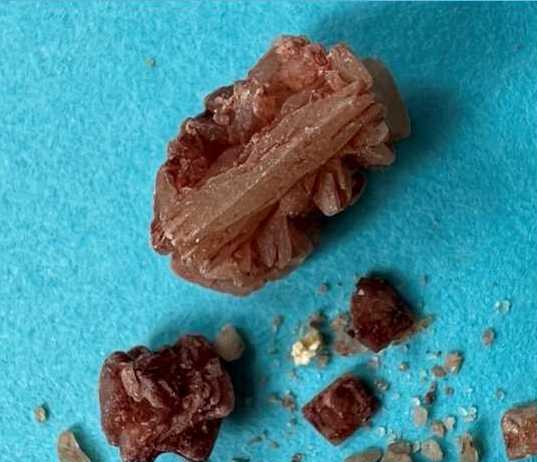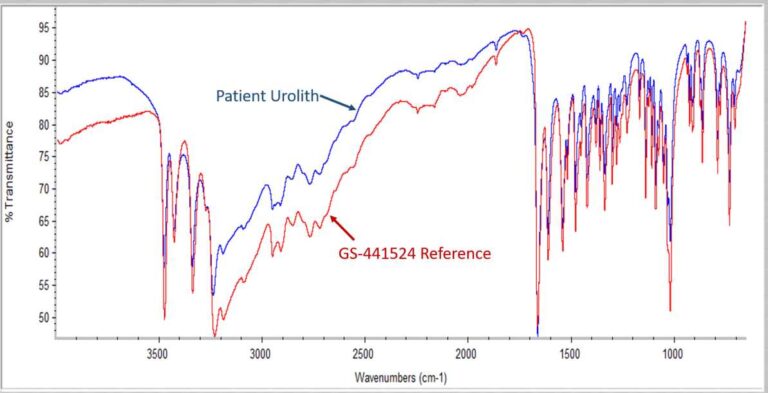A mysterious new type of stone in cats
Between January and April 2023, the Urolite Center in Minnesota received three shipments of atypical stones (Figure 1). All three samples were obtained from cats. All three cats were under 1 year old. Cats came from North and South America. In each case, the infrared spectrographic pattern of the stones was identical. Urinary stones usually contain large amounts of phosphorus, calcium and magnesium. In these cases, electron dispersion spectroscopy revealed a high proportion of nitrogen, carbon and oxygen.
Mystery solved. When asked about their medical history, all three cats were diagnosed with feline infectious peritonitis. All three were treated with either Remdesivir or its metabolite GS-441524. We requested samples of their antiviral drugs for analysis. The antiviral drugs were spectrographically identical (Figure 2). The stones were composed of GS-441524.

Figure 1: Feline uroliths

Figure 2: FT-IR spectroscopy of urinary stone of patient and reference sample GS-441524
After administration, GS-441524 is excreted primarily in the urine. Although GS-441524 is very soluble in organic solvents such as DMSO (10-59 mg/ml), it is poorly soluble in aqueous solutions such as water (0.0004 to 0.1 mg/ml). Its limited solubility makes GS-441524 a prime candidate for stone formation. Observation of urinary symptoms in cats receiving Remdesivir or GS-441524 is an indication to look for stones. Observation of atypical crystalluria or uroliths may be an indication to limit the dose of the drug (if possible) and increase water consumption to minimize stone formation.
1 Comment
สล็อต · April 15, 2024 at 11:17 pm
Way cool! Some very valid points! I appreciate you
writing this article and the rest of the website is also very good.